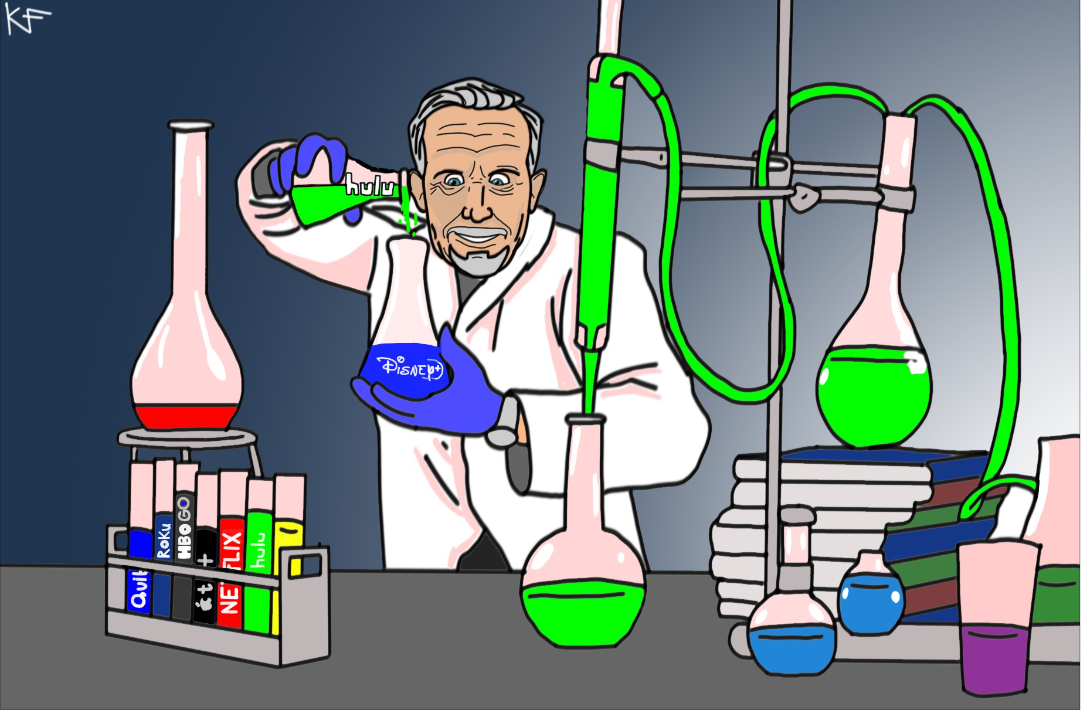Wolk: Experimentation Is The Order Of The Day
Programmers look to find ways to keep viewership steady in an unsteady environment

While the coronavirus lockdown has been a bonus for those in the TV industry who don’t rely on ad revenue, and a mixed blessing for those who do (viewership up, ad revenue down), we’re about to enter a new phase that may prove to be even more vexing for programmers and advertisers alike, but which should result in an expansion of innovation and experimentation.

For while some of the U.S. is opening up, some of it will remain under lockdown, an asynchronous situation that will affect programming decisions as well as ad spend, especially since it is likely that this will continue for the rest of the year (if not longer) with different states or regions opening slowly and closing quickly.
This presents some unique challenges for programmers, as one segment of their audience will be confined at home, eagerly looking for something new to watch, while another portion is out and about, enjoying their new found freedom.
Take live show, for instance. The revival of live shows, in the form of streaming concerts, worked well in the early days of the lockdown when everyone was at home. But as summer approaches, that strategy may no longer work, both because everyone who can is out enjoying the warm weather and because how many your-favorite-musicians-at-home concerts do people really have an appetite for?
Sports will be challenging too, provided Major League Baseball decides to open up again and the NBA, NHL and NFL decide to open up in the first place. There will likely be games played in stadiums full of fans and games played in empty stadiums.
And while the leagues may try to move games to stadiums and arenas in areas not under lockdown, with so many teams and so many games, that will not always prove possible…or desirable. Fans in areas under lockdown will be at home ready and willing to watch and so it may be in the leagues’ best interest to show home team games, even without fans in the stands.
Programmers will also need to figure out what to do with their upcoming series premieres. (Provided, of course, they have any series to premier.)
The smarter way to stay on top of the streaming and OTT industry. Sign up below.
The key issue here is for programmers to figure out how long their new shows are going to need to last them. Will there be a three month gap between last season and the next, or are we looking at nine months of nothing new save animated series and documentaries?
One trick may be for networks to space out the time between episodes, something they already do to a degree so as not to take ratings hits due to holidays and other special events. So we might see new episodes every two weeks or so, which also works well with the way many people watch TV these days, catching up via DVR, VOD or app many days after the episode actually aired.
In a similar vein, I’ve been asked if I think Netflix or Amazon will go to a weekly release schedule in order to keep their content flow going. While I have no idea what they’re actually thinking, I suspect that both will try and avoid that scenario as it goes against their core value proposition. Instead, they may break up a series into two “seasons”, dropping the first six episodes and then waiting two or three months to drop the second six episodes.
This may work to help increase sampling—given the still overwhelming amount of programming out there, committing to six hour-long episodes might feel less intimidating to viewers than committing to 12.
Finally, there’s the issue of ratings, both for live and streaming programming: It will be interesting to see if there is a significant gap between states or regions where the lockdown is in effect and those where it has been (temporarily) lifted, and if so, if it affects all shows or just certain genres.
One final piece to keep an eye on is movie releases. Several major studios have indicated that they are going to shift the spring’s movie releases from theaters to streaming, at least for certain movies.
This is an area with a whole lot of question marks: will people want to go to the movies if they need to social distance and wear masks during the film? (Which begs the question of how they’ll eat popcorn.) Will they pay large sums of money to watch movies at home? (Larger than the $5 or $6 Amazon and Apple usually charge for a movie rental) and will studios consider split doing releases—in theaters in areas where that’s feasible and on streaming where it’s not.
And the biggest question of all—how much money (if any) do the studios make in the middle of all this?
The next year will see a lot of experimentation as programmers look to find ways to keep viewership steady in an unsteady environment. As history shows, many of those temporary innovations may become permanent, especially if they prove popular with consumers.
Alan Wolk is the co-founder and lead analyst for media consultancy TV[R]EV

